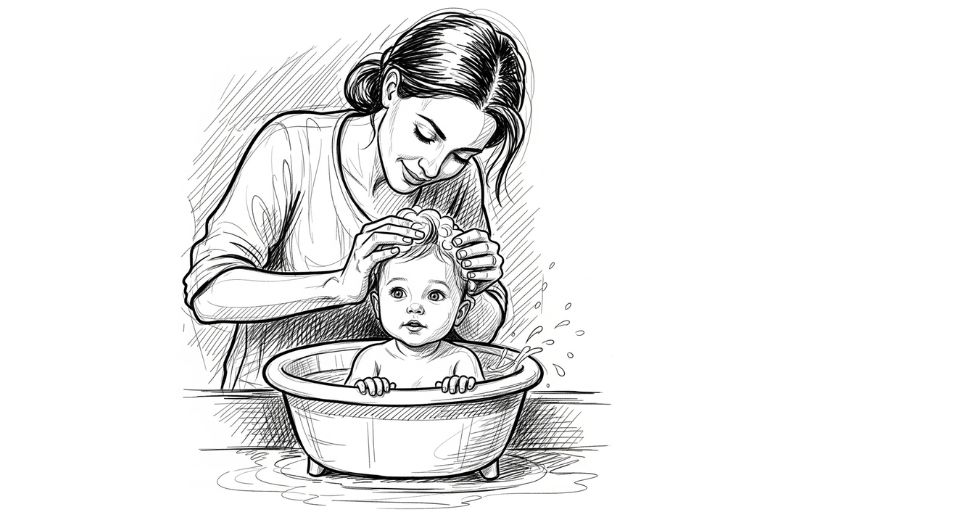
Aug 19, 2025

The recently released Baby Shampoo Market Report by Metastat Insight unveils a multifaceted portrait of an industry that is quietly but significantly part of the overall universe of personal care. Compared to most other beauty or hygiene categories that become part of the spotlight of trend-driven attention, baby shampoo has had a profile of quiet gravitas. It is not merely a matter of washing a child's fragile scalp and locks but also faith in the bottles picked by the parents from the counters. This blend of safety concerns, brand preferences, and sensitive innovation has made the subject of the report an enticing field of research to pursue. Global Baby Shampoo market is projected to reach $3,742.32 Million by 2032; growing at a CAGR of 5.1% during the period 2025-2032. Looking at the journey baby shampoo has made over time, one observes how the identity of the product has always been about gentleness.
Since the beginning, the appeal has rested on the guarantee of tear-free products and products that would not disrupt the natural chemistry of a baby's complexion. But what began as a straightforward response to a problem for parents has become a multifaceted business in which formulation, packaging, fragrance, and even moral sourcing all play important parts in the way the market positions itself. The use of botanical and natural ingredients has grown as a defining feature, the manner in which broader consumer trends eventually filter down to even the most sensitive product categories. The second factor that can be noted is how baby shampoo has progressed from being just an ordinary household staple. It is often the first experience many consumers have with a personal care company.
Parents purchasing a baby shampoo can then continue to use the same brand as the child gets older and moves into children's ranges and ultimately adult products. This continuity creates a longer narrative for brands, allowing potential for loyalty beyond the earlier years of children. The trust established in early purchases is priceless, and brands are careful to protect it through transparency in labeling, gentle soft-sell communications, and transparent exhibition of commitment to quality. The global Baby Shampoo Market also comes with cultural nuances. While some markets focus on herbal heritage and indigenous ingredients, others depend on dermatological science and medical approvals to reassure consumers. Beauty is in minimal packaging and avoiding extraneous additives in some areas, while in other areas, bright colours and identifying cartoon characters turn the head.
These subtleties underscore the importance of cultural acceptance in specifying receptivity to product, so nothing overpowers the marketplace. Marketing efforts here are also reflections of the delicate line that companies must tread. Unlike adult beauty advertising that often succeeds on glamour, aspirational ideals, or sensational claims, baby shampoo advertising conventionally stresses safety, comfort, and reassurance for parents. The imagery is also leaning toward warmth and affection, echoing the intimate moments of skin contact between parents and children during bath time. This affective connection distinguishes the category, where the activity of washing a baby's hair is presented not necessarily as cleaning, but as a bonding and nurturing activity.
Sustainability has also asserted itself in the baby shampoo industry, putting a new spin on what consumers have learned to anticipate. Those parents who are more concerned about the planet would appreciate products that are gentle to not just their children but to the environment as well. This has fueled innovation in biodegradable packaging, refill packaging, and formulations to reduce water consumption in rinsing. These activities may be small in scale but reflect a larger consciousness permeating both the production and purchasing decision process.
The marketing activities for baby shampoo illustrate how even a line of products that at first glance appears uncomplicated requires high-level planning. Distribution channels have broadened beyond the mainstream retailer to include e-commerce, direct-to-consumer subscription, and specialty web shops. The range provides parents with convenience and choice, two aspects that take on increasing importance in modern living. Furthermore, collaborations with pediatricians, parenting bloggers, and even hospitals serve as stamp of approval that enhances consumer confidence.
What becomes clear in this analysis is the nature of the market cannot be grasped by means of the concept of growth. It is more a story of constancy with subtle innovation, where companies must tread carefully lest they jeopardize the very trust that sustains them. The vision of the consumer in this space is exacting, with mothers cross-examining ingredient lists, safety, and ethical dedication more intensely than maybe any other personal care category. This heightened awareness has spawned a culture of openness that is no longer just desirable but de rigueur, with little leeway now for brands that fail to keep pace. In threading these threads together, Metastat Insight's Baby Shampoo Market Report identifies the unheralded but substantial role of this sector in shaping consumer confidence, family routines, and innovation in personal care.
Drop us an email at:
Call us on:
+1 214 613 5758
+91 73850 57479